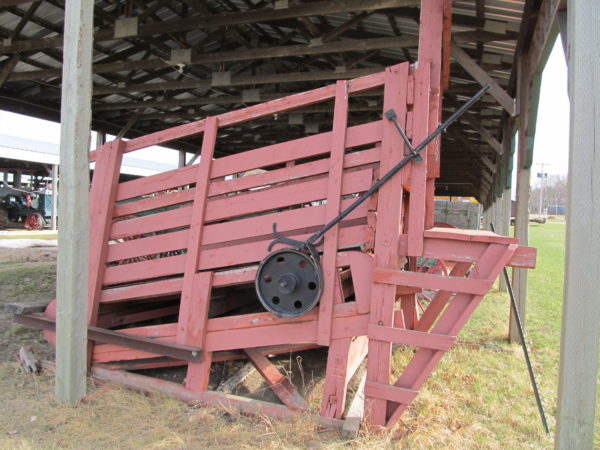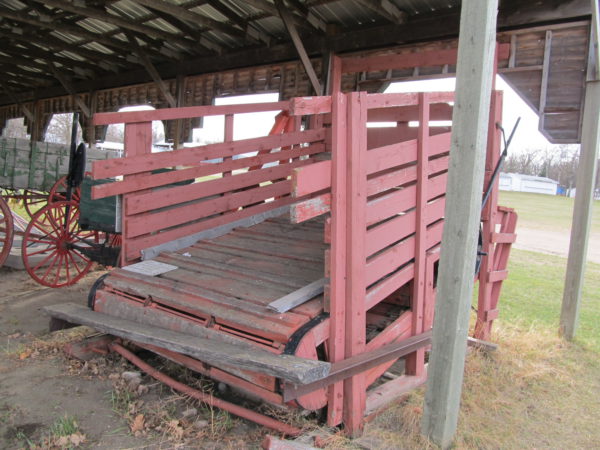

With the invention of farm machinery such as the ground hog thresher, came the need for farm power. Wind was one answer but the wind does not blow all the time so other means of generating power were needed. The treadmill was an obvious candidate as treadmills were well known in the 1830 having been around since Roman and Greek times. Both animal and people were used by the Greeks and Romans to power treadmills.
Treadmills were used through the Dark Ages and on up to the 1800s to pump water, grind flour and even power cranes. Treadmills were even in use in British prisons as a means of supplying the hard labour many prisoners were sentenced to. Prisoners could be on a treadmill for up to eight hours a day with a number of rest breaks. Treadmills were hated and feared by even the most hardened prisoners.
So as mechanized farm machinery was introduced, the treadmill was a logical choice as a power source. Treadmills had some advantages and disadvantages over power sweeps. The treadmill was more compact and so could be operated in a barn however treadmills were limited to usually two horses so limiting its power output. The larger horse sweeps could accommodate 8 horses. With a treadmill it was not necessary to apply the whip to the horses as the horse treadmill’s bed is inclined. Once the horses were brought on to the bed and the tread began turning, the horses naturally kept walking forward as the horse would find it unnatural to stop walking and yet be moved backwards due to the inclined bed. The downside to the treadmill was that if the belt connecting the treadmill to the threshing machine was thrown off, suddenly reducing the load on the treadmill, the treadmill would immediately gain speed. This could possibly throw the horses off their feet and perhaps breaking legs. A brake was fitted to treadmills and someone had to be in close attendance to throw the brake if the drive belt came off. Horse sweeps did not suffer this problem.
Oxen were not used on treadmills for the simple reason oxen will not back up. So once they were brought on to the bed they would be very difficult to get off the bed. As well oxen were never used on sweeps as it was thought the oxen would become dizzy walking in a circle.
The Manitoba Agricultural Museum has a horse tread mill in the collection. It was donated to the Museum in the late 1950 by Charles Nicholson of the Franklin district. Because of the danger to horses it is not operated. There are no markings on the treadmill as to its manufacturer. It is largely built of wood with a few pieces in the drive train made of iron.


